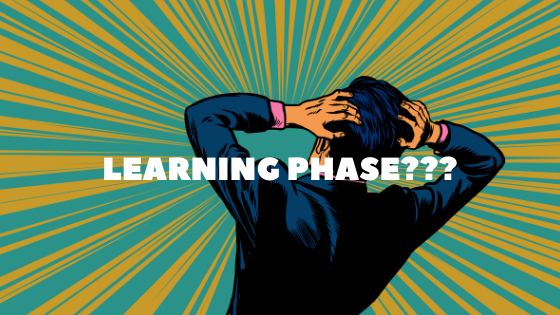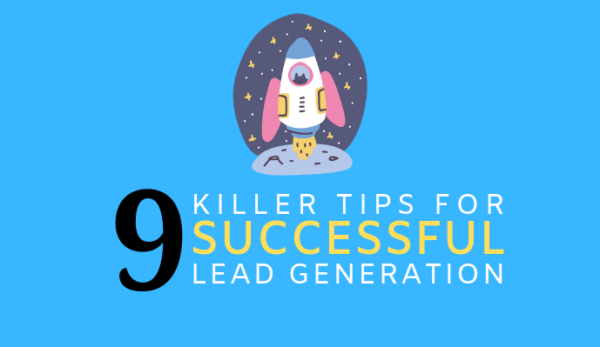
🤯 I’ve Designed 10,000+ Facebook Ads: Here’s What I Learned
It’s a beautiful feeling when you’ve spent hours on top of hours perfecting your beautiful new Facebook ads and sending it off into the wilderness. You’ve got a huge bright red button, the universally accepted blue background, and you wrote “FREE” three times in the ad copy. This will surely work!
But then the click-through rate dropped by .5%? HOW?
That confusion and disappointment of seeing your ad go wrong when you theoretically followed every single guideline to create the perfect ads, I’ve felt that same confusion and disappointment too many times throughout my career (I’ve designed 10,000+ Facebook ads).
Here’s what I’ve learned: Those textbook guidelines aren’t always the right rules to implement on your campaigns or your company. I’m going to share with you the seven biggest lessons that I’ve learned so that you can create Facebook ads that deliver the results you need.
1. It’s never about the colors, it’s always about the contrast

Over the years, I’ve read many blog posts and Facebook specialists debate about the best colour to use for a button. Based on all of my research, the best colour to use is lime green.
I’m kidding! (Please don’t use lime green)
There is no concrete or quick answer to this and it all depends on your audience and a little fundamental design principle known as contrast.
This particular study conducted by Hubspot, compares red buttons vs. green buttons. The study found that the red button performed and converted a lot better than the green button. A closer look at their designs reveals that Performable’s (company used to test) logo and website contained a lot of green. Red contrasts well with green.
The easiest way to find contrasting colors is to revisit our old childhood friend, the color wheel.
The first step is to find the most dominant color in your ad, and switch to the exact opposite end of the colour wheel to find the contrasting color.
Here are my favourite free colour palette tools that can help you create amazing colour schemes for your ads; Canva’s Color Palettes and Adobe Color, which lets you select an opposite color scheme.
You can create contrast in your ads without using colour—you can also modify effectivenes with things like brightness, saturation, and scale to make your buttons stand out more. You can also create high-performing ads that don’t even have buttons, but we’ll get into that in the next section of this article.
2. Keep it simple

Communicating your message in the simplest and cleanest way is one of the most critical ways to creating successful ad creatives. If a prospective client isn’t able to immediately understand your ad, they’re not going to click, or even remember it.
It’s critical to understand exactly what your audience will see first. Facebook ads that are placed in mobile will only show the audience three lines of text, compared to the seven that could be previously viewed. Facebook users can now click to show more of the text. Photos and videos will have a 4:5 aspect ratio, at most, compared to the previous 2:3.
3. Context is key

It’s crucial to consider and understand the context in which your Facebook ad will be displayed and consumed when you start brainstorming design themes. When I first started with Business Marketing Experts and worked with my first client, I was just beginning to get a feel of their brand, I was tasked with making some new Facebook ads. I felt really good about how clean, polished and modern my ads looked. I was positive it would perform really well.
It didn’t perform well at all. I went back to the drawing board. What’s the secret ingredient missing here? It’s context! While that particular ad looked great, I didn’t consider how the ad would be consumed and the ad felt too much like an ad and not a part of their experience.
We’ve found that our Facebook ads tend to perform better when they work together with the prospect’s timeline to create a cohesive experience within Facebook itself. Creating ads that compliment your ideal client’s timeline and Facebook experience is a great way to improve your conversions.
According to Facebook, a combined approach of video and image ads delivers the best conversions on their platform. And carousel ads tend to perform notably well for eCommerce businesses.
5. Use seasonality to refresh your creative

Utilizing holidays and seasonality in your ads is an excellent way to refresh existing campaigns throughout the year. They also serve as great motivation for your copywriting. Just remember to be considerate of your audiences when making seasonal or holiday-themed ads.
6. Take advantage of free resources

Not every single business has the budget to hire a full-time designer or wants to pay the high fee’s of a stock photo subscription service when they’re just starting out, that’s why it’s a good idea to utilize all of the great free tools that are available. Here are a few other free tools that I personally recommend.
Moat, the GOAT of competitive creative analysis
Moat offers a paid product with more in-depth data, however, their Free Banner Ad Search tool is amazing if you’re looking for creative inspiration. Type in an existing brand, and Moat will provide several examples of ad creatives that have been run by that brand. You should use this information responsibly. Just because a particular brand has deployed these creatives, doesn’t mean that they’ve performed well.
Free stock photos that don’t suck with Unsplash
Even though I have access to a paid stock photo resources, I find myself browsing Unsplash, because the images are often better suited to what I want than what I’m able find on stock photo sites. The photography has a more natural feel than the majority of the staged stock photos circulating the internet.
Facebook’s Text Overlay Tool
You’re able to upload the photo that you’re going to use for your Facebook Ad and the Facebook Text Overlay Tool will determine the amount of text is in your ad image. If the proportion of text to image is too high, your ad may not reach its full audience. You’ll have a great idea of how your creative will perform on the Facebook Audience Network algorithm.

7. Divorce your ideas

My final tip is the most important but the hardest to acknowledge: Don’t be super attached to your ideas!
As a creator, I completely sympathize with how easy it is to get emotionally attached to an idea that you’ve worked on for hours. Separate what you think is a great idea from what actually delivers strong results, because this is different for every brand, business and every audience that you’re going to target.
How something makes you feel probably makes another person feel in an entirely different way based on their own personal experiences, childhood and etc. Take the time to learn exactly what it is that your audience likes by testing new creatives frequently, and setting up A/B tests because they will help you figure out just what the secret ingredient is that’s making a certain campaign a top performer. Art is always subjective, but great design is objective.
I help businesses develop lead generation and digital marketing campaigns that deliver results. Ask me about my success stories florind@businessmarketingexperts.ca
In the last 7 years, Florind has mastered packaging brands, products, and services in today’s digital landscape. He brings brands and customers together in a very natural way.
The first word that clients describe Florind with is results – measurable, tangible/real, and trackable. Transparency is rare in the industry but data never lies. By combining analytics, systems, automation, and metrics – Florind has been able to deliver exponential results for his clients. His attention to detail and his pursuit of efficiency and effectiveness is why clients love him and the results he delivers.













Recent Comments